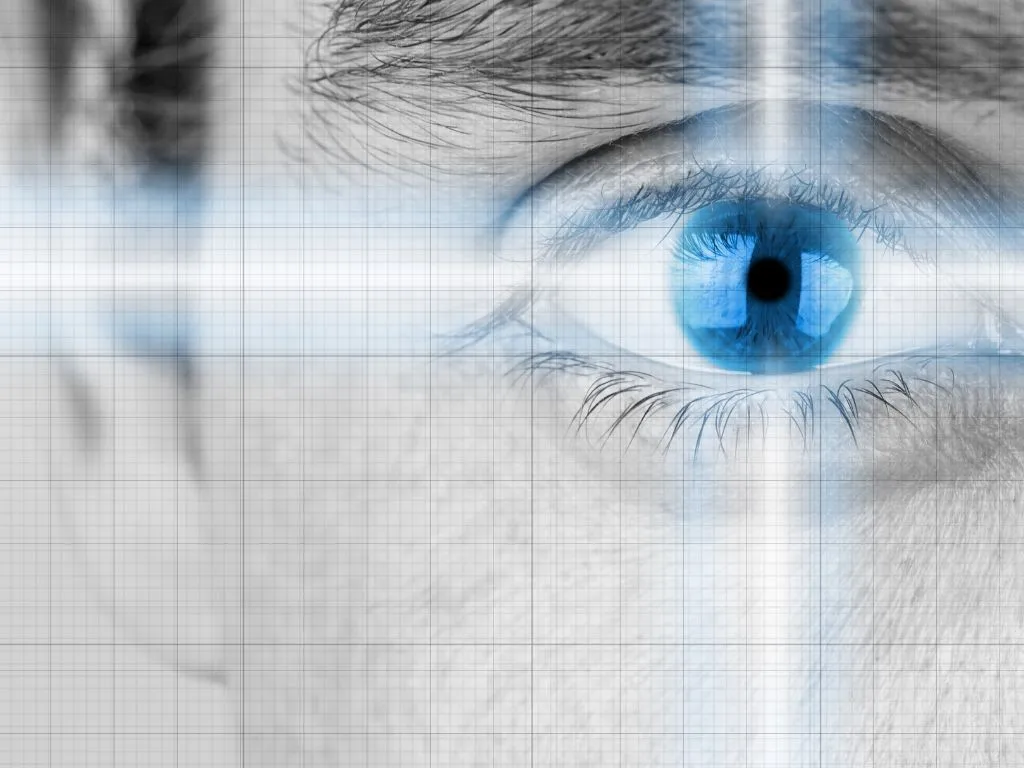[read-time]

Table of Contents
- Personality psychology, Neuroticism and the impact on energy levels
- The concept of personality color trait
- The role of neuroticism in determining energy levels
- How different personality color traits affect energy levels
- 3 Strategies to manage exhaustion based on your personality color trait
- The importance of self-awareness and self-care in managing energy levels
- The Takeaway
- FAQs
- Is there a connection between neuroticism and fatigue?
- What is the relationship between personality color traits and exhaustion?
- How does neuroticism affect mental health in relation to exhaustion?
- Can personality traits predict long-term fatigue or exhaustion?
- How does the concept of personality color traits relate to the Big Five personality model, particularly neuroticism?
- Footnotes
Personality psychology, Neuroticism and the impact on energy levels
One of the key personality traits that significantly influences energy levels is neuroticism, which we discuss shortly. Personality psychology delves into human behavior, exploring our unique traits. One aspect that has gathered significant attention is the impact of personality on our energy levels. Whether you find yourself consistently energized or frequently drained, your personality may hold the key to understanding this phenomenon.
Your exhaustion may be directly linked to your personality color trait. In this article, not only you will learn three practical strategies – dependent upon your color trait – but we also provide six self-care practices to support your development.
Personality psychology recognizes that individuals possess distinct combinations of traits, which influence various aspects of their lives, including their energy levels. These traits are not mere superficial qualities but rather deeply ingrained patterns that govern how we perceive, interpret, and respond to the world around us. By unraveling the complexities of personality, we can gain invaluable insights into the factors that contribute to our energy levels and develop strategies to manage exhaustion effectively.
The concept of personality color trait
One of the widely recognized frameworks in personality psychology is the concept of personality color traits. This model categorizes individuals into four distinct personality types, each represented by a specific color: Red, Blue, Green, and Yellow. These colors symbolize the unique blend of traits, tendencies, and preferences that characterize an individual’s approach to life.
- Red: Assertive, driven, and goal-oriented individuals who thrive on challenges and seek control over their environment.
- Blue: Nurturing, empathetic, and people-oriented individuals who prioritize harmony and value relationships.
- Green: Analytical, logical, and detail-oriented individuals who seek structure, order, and efficiency.
- Yellow: Spontaneous, creative, and energetic individuals who embrace change and seek new experiences.
It is important to recognize that individuals may exhibit a combination of traits, and their personalities are not limited to a single color. The personality color trait framework provides a valuable lens through which we can understand the underlying factors that shape our energy levels and susceptibility to exhaustion.
The role of neuroticism in determining energy levels

Neuroticism1 is characterized by a tendency to experience negative emotions, such as anxiety, worry, and emotional instability. Individuals with high levels of neuroticism are more prone to experiencing stress and emotional exhaustion, which can drain their energy reserves.
Research has shown that individuals with high neuroticism tend to deliberate excessively on negative thoughts and experiences, leading to heightened physiological arousal and increased levels of cortisol, the body’s primary stress hormone. This prolonged state of physiological and psychological stress can deplete energy levels, leaving individuals feeling fatigued and drained.
How different personality color traits affect energy levels
While neuroticism plays a significant role in determining energy levels, the personality color trait framework provides further insights into how different personality types may experience and manage exhaustion.
- Red Personality: Individuals with a predominantly Red personality trait are often driven and ambitious, with a strong desire for achievement and control. Their high energy levels can propel them forward, but their intensity and relentless pursuit of goals can also lead to burnout if not balanced with self-care and relaxation.
- Blue Personality: Those with a Blue personality trait prioritize harmony and relationships. Their empathetic nature and tendency to put others’ needs before their own can lead to emotional exhaustion, particularly if they neglect their own self-care and boundaries.
- Green Personality: Individuals with a Green personality trait value structure, order, and efficiency. While their analytical approach can help them manage tasks effectively, their tendency towards perfectionism and attention to detail can lead to mental fatigue and energy depletion if not balanced with rest and relaxation.
- Yellow Personality: Those with a Yellow personality trait are known for their spontaneity, creativity, and enthusiasm. While their energy levels may initially appear boundless, their tendency to engage in multiple projects simultaneously and their aversion to routine can lead to burnout if they fail to prioritize self-care and establish boundaries.
Factors influencing the connection between personality color trait and exhaustion
While personality color traits provide valuable insights into energy levels and susceptibility to exhaustion, it is essential to recognize that various factors can influence this connection. These factors include:
- Lifestyle Choices: Our daily habits, such as sleep patterns, nutrition, exercise, and stress management techniques, can significantly impact our energy levels, regardless of our personality color trait.
- Environmental Factors: The environments in which we live and work can either drain or replenish our energy reserves. Factors such as noise levels, lighting conditions, and social interactions can influence our energy levels and overall well-being.
- Coping Mechanisms: The strategies we employ to cope with stress and challenges can either exacerbate or alleviate exhaustion. Effective coping mechanisms, such as mindfulness practices, social support, and problem-solving skills, can help mitigate the impact of stress on our energy levels.
- Life Transitions: Major life events, such as starting a new job, relocating, or experiencing a significant loss, can temporarily disrupt our energy levels and increase our vulnerability to exhaustion, regardless of our personality color trait.
3 Strategies to manage exhaustion based on your personality color trait
While understanding the connection between personality color traits and energy levels is valuable, it is equally important to develop practical strategies to manage exhaustion effectively. Here are some tailored strategies based on your personality color trait:
- Red Personality:
- Prioritize self-care by scheduling regular breaks and downtime.
- Practice mindfulness techniques to stay present and avoid burnout.
- Delegate tasks and learn to relinquish control when necessary.
- Blue Personality:
- Set healthy boundaries and learn to say “no” when necessary.
- Engage in activities that replenish your emotional energy, such as journaling or creative pursuits.
- Build a support network and seek help when feeling overwhelmed.
- Green Personality:
- Incorporate relaxation techniques, such as deep breathing or meditation, into your routine.
- Embrace imperfection and learn to let go of perfectionist tendencies.
- Engage in physical activities to counterbalance mental fatigue.
- Yellow Personality:
- Establish routines and structure to maintain a sense of balance.
- Engage in activities that allow you to channel your creativity and energy productively.
- Practice time management skills to avoid overcommitting and burnout.
The importance of self-awareness and self-care in managing energy levels

Regardless of your personality color trait, cultivating self-awareness and prioritizing self-care are crucial for effective energy management. Self-awareness involves recognizing your unique strengths, weaknesses, and tendencies, as well as understanding how they impact your energy levels. By developing this self-awareness, you can identify potential triggers for exhaustion and proactively implement strategies to mitigate their effects.
Self-care encompasses a range of practices that promote physical, emotional, and mental well-being. These practices may include:
- Engaging in regular exercise and physical activity
- Maintaining a balanced and nutritious diet
- Prioritizing quality sleep and rest
- Practicing stress-management techniques, such as meditation or deep breathing exercises
- Nurturing supportive relationships and social connections
- Engaging in hobbies and activities that bring joy and fulfillment
By prioritizing self-care, you create a foundation for optimal energy levels and resilience, allowing you to navigate the demands of daily life with greater ease and vitality.
The Takeaway
Embracing your personality color trait for better energy management
The connection between personality psychology and energy levels is undeniable. By understanding your personality color trait and the unique strengths and challenges it presents, you can gain valuable insights into your energy patterns and susceptibility to exhaustion. However, it is crucial to recognize that while personality traits provide a framework for understanding, they do not define our limitations.
Embrace your personality color trait as a starting point for self-discovery and personal growth. Utilize the strategies tailored to your trait to manage exhaustion effectively, while also remaining open to exploring and adopting practices that resonate with your individual needs and circumstances.
Remember, energy management is an ongoing journey of self-awareness, self-care, and continuous adaptation. By embracing your personality color trait and prioritizing your well-being, you can unlock the key to sustained energy levels, increased productivity, and a more fulfilling and balanced life.
FAQs
Is there a connection between neuroticism and fatigue?
Yes, research consistently shows a strong link between neuroticism and fatigue. Higher levels of neuroticism are associated with a greater likelihood of experiencing both concurrent and incident fatigue. Studies indicate that for every standard deviation increase in neuroticism, there’s approximately a 70% increase in the probability of fatigue.
What is the relationship between personality color traits and exhaustion?
We can draw some parallels:
- “Red” personalities, often associated with high energy and extroversion, might be less prone to fatigue, as extraversion is linked to lower fatigue risks.
- “Blue” personalities, sometimes associated with calmness and stability, might align with lower neuroticism and thus potentially lower fatigue risks.
- “Green” personalities, often linked to analytical and perfectionist traits, might relate to conscientiousness, which is associated with lower fatigue risks.
How does neuroticism affect mental health in relation to exhaustion?
Neuroticism plays a significant role in mental health and exhaustion:
- Higher neuroticism is associated with a greater risk of psychiatric disorders.
- It’s linked to a higher propensity to experience distress and intense negative emotions, which can contribute to mental exhaustion.
- Neuroticism is related to worse physical and mental health, which can exacerbate feelings of fatigue.
Can personality traits predict long-term fatigue or exhaustion?
Yes, personality traits can be predictive of long-term fatigue:
- Higher neuroticism predicts a higher likelihood of incident fatigue over time.
- Higher extraversion and conscientiousness predict a lower likelihood of incident fatigue over extended periods.
- These associations remain significant even when accounting for factors like self-rated health and physical inactivity, suggesting a robust relationship between personality traits and long-term fatigue risks.
How does the concept of personality color traits relate to the Big Five personality model, particularly neuroticism?
Footnotes
- Neuroticism is a personality trait associated with negative emotions. It is one of the Big Five traits. Individuals with high scores on neuroticism are more likely than average to experience such feelings as anxiety, worry, fear, anger, frustration, envy, jealousy, pessimism, guilt, depressed mood, and loneliness. ↩︎
Uncovering Social Desirability Bias in AI Personality Tests: The Surprising
An intriguing area of study of AI involves social desirability bias when administering personality tests to large language models (LLMs)…
5 Secret Tips for Identifying Personality Color Traits in Others
[read-time] The concept of personality color traits is rooted in the idea that individuals can be categorized based on the colors…
Surely, This Can’t Be True, Can It? Dancing Makes You
[read-time] Have you ever wondered how something as simple as moving your body to the rhythm of music could profoundly impact…
These 5 Successful Keys To Change Management Depend Greatly On
[read-time] Change management has become increasingly crucial for organizations seeking to navigate change effectively. Personality color traits, a widely recognized framework,…
What Exactly Are the 7 Definitions of Leadership? Discover the
[read-time] In this comprehensive guide, we’ll explore the 7 definitions of leadership, delve into the color personality test, and uncover the…
Negative Self-Talk: 5 Effective Strategies to Overcome Negative Self Talk
[read-time] Negative self-talk is that inner voice that criticizes, doubts, and undermines your abilities. It’s the constant stream of negative thoughts…






